What is Nasu Agebitashi?
Agebitashi (揚げ浸し) refers to a cooking method in which ingredients are deep-fried in oil and then soaked in a seasoned broth to soak up the flavors. The most common agebitashi is made with eggplant (or “nasu” in Japanese). The eggplant is deep-fried for a short time over medium heat and soaked in a dashi broth seasoned with soy sauce and mirin.
This dish is served chilled and recommended in summer when eggplant is in season, and you can appreciate it at its best.
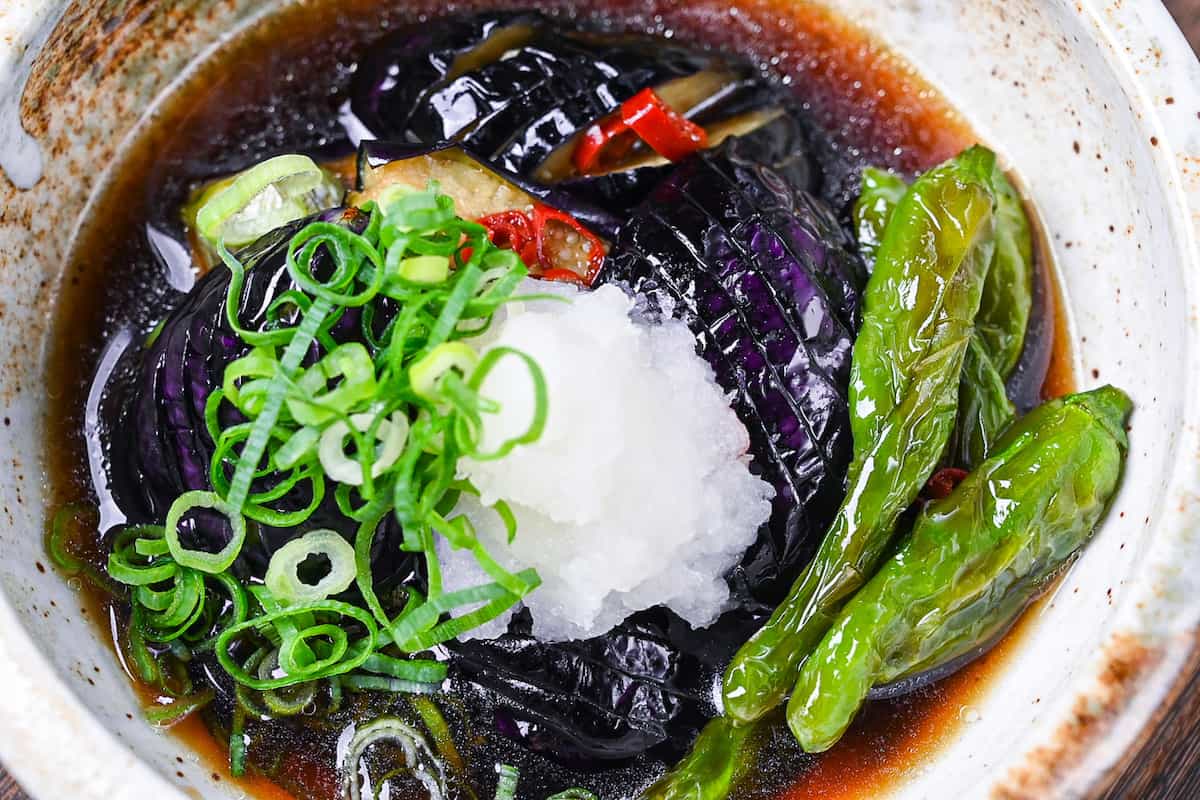

How I Developed This Recipe
This recipe for Nasu no Agebitashi focuses on enhancing the natural flavors of the eggplant to achieve a classic, authentic taste typical of Japanese cuisine. It’s especially great if you have an abundance of eggplant.
The recipe is designed to highlight the vegetable’s unique texture and taste, making it a perfect side dish. Give it a try to enjoy a traditional Japanese flavor at home.
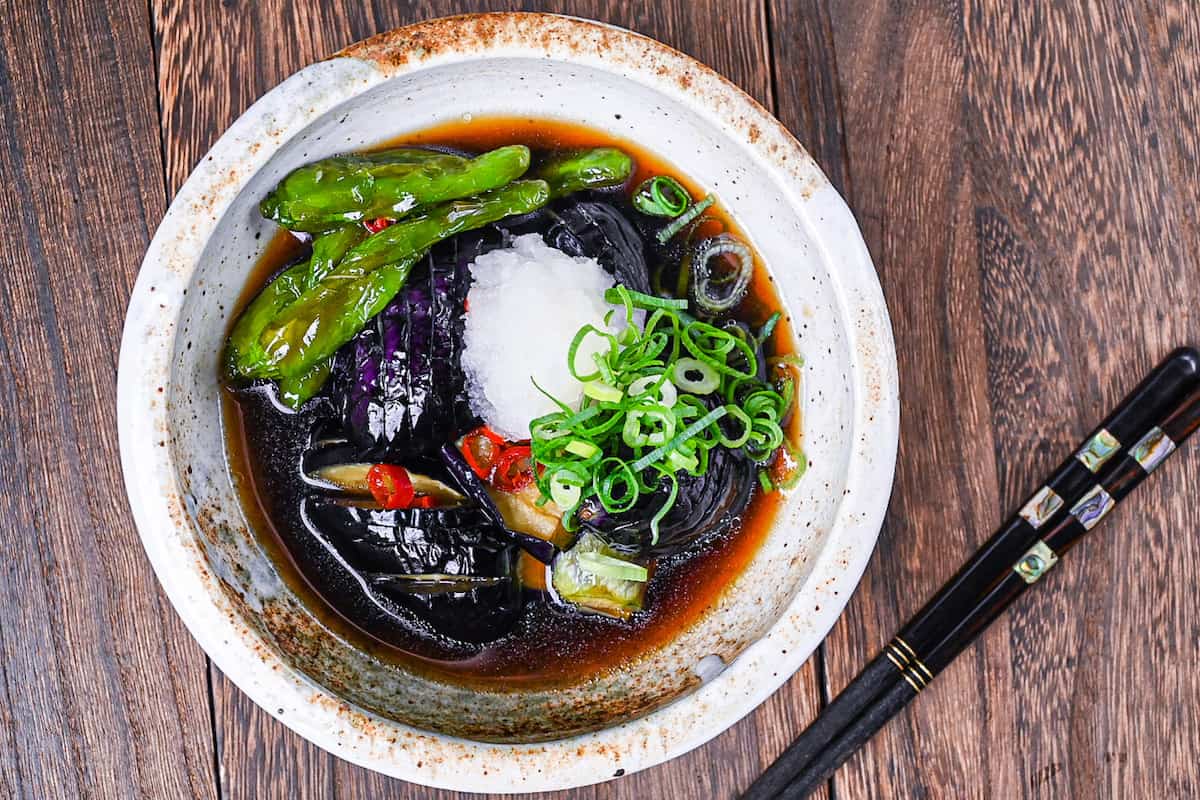
Ingredients & Substitution Ideas
- Dashi Broth: Essential for the base flavor. Choose from kombu and bonito awase dashi or vegan dashi. Instant dashi granules or packets are convenient alternatives.
- Soy Sauce: For brand recommendations, refer to my comprehensive soy sauce guide.
- Mirin: Hon Mirin (本みりん) is recommended for an authentic Japanese flavor.
- Sugar: Regular sugar is fine, but I personally prefer light brown cane sugar.
- Dried Red Chili Pepper: Use deseeded and thinly sliced for a subtle heat.
- Eggplant: Recommended options include Japanese, Chinese, or Italian eggplant, as they are smaller and ensure each piece has skin on without being too thick.
- Shishito Peppers: An optional addition for a mild, distinctive flavor.
- Toppings: Grated daikon radish and finely chopped green onions enhance the dish with fresh and sharp flavors.
Eggplant is great for soaking up flavors and is the most commonly used vegetable for agebitashi, however it can also be made with:
- Shishito peppers
- Piman (bell peppers)
- Zucchini
- Kabocha (Japanese squash/pumpkin)
- Carrot
- Gobo (burdock root)
- Renkon (lotus root)
- Okra
- Asparagus
- Bamboo shoots
You can try making agebitashi with a mixture of different vegetables! Keep in mind that frying times vary depending on the texture and thickness of each vegetable.
Jump to Full Recipe Measurements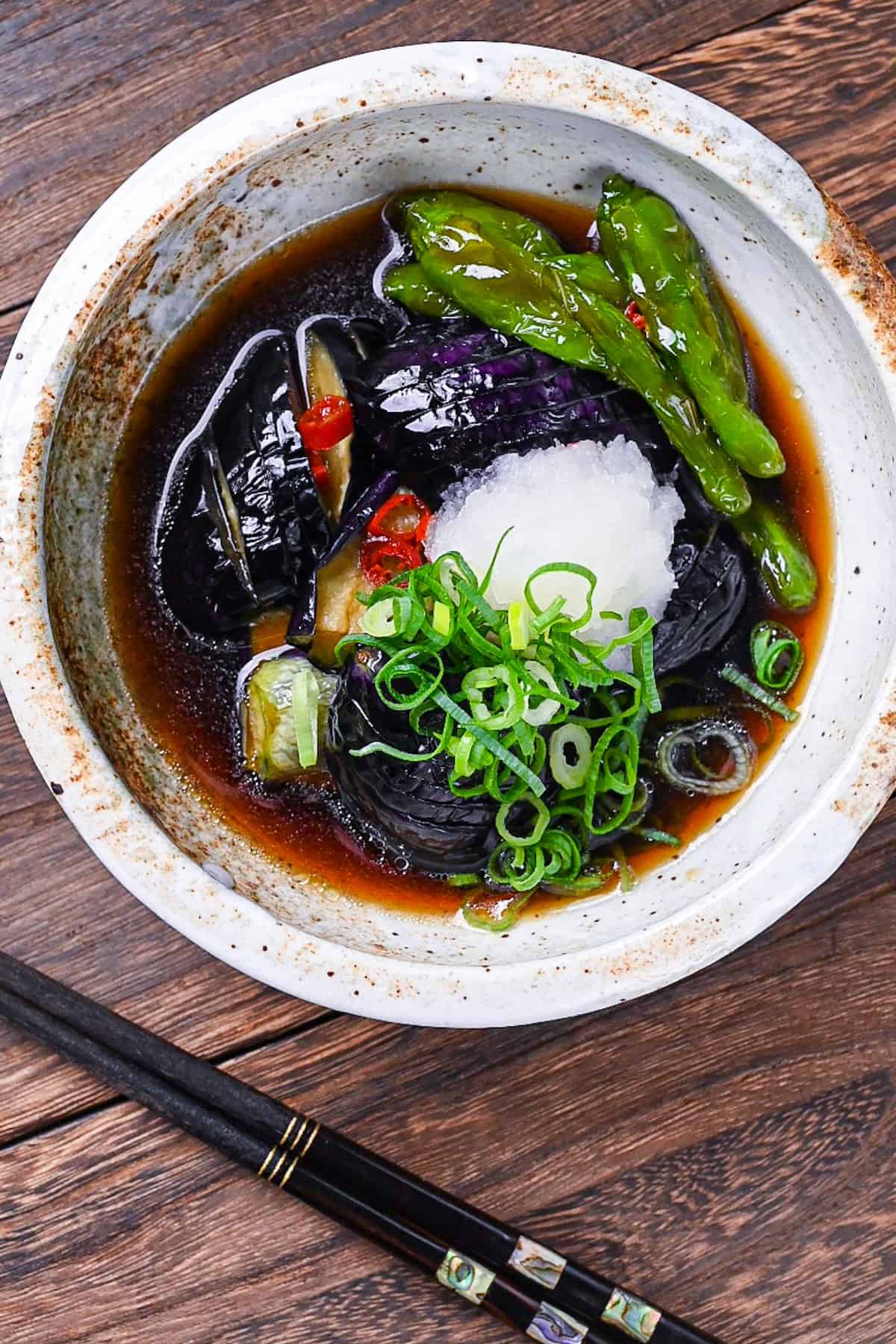
Visual Walkthrough & Tips
Here are my step-by-step instructions for how to make Nasu no Agebitashi at home. For ingredient quantities and simplified instructions, scroll down for the Printable Recipe Card below.
As agebitashi is served chilled, it’s best to make the broth first, so it has time to cool down. Add dashi, soy sauce, mirin, sugar, and finely chopped chili pepper to a small saucepan.
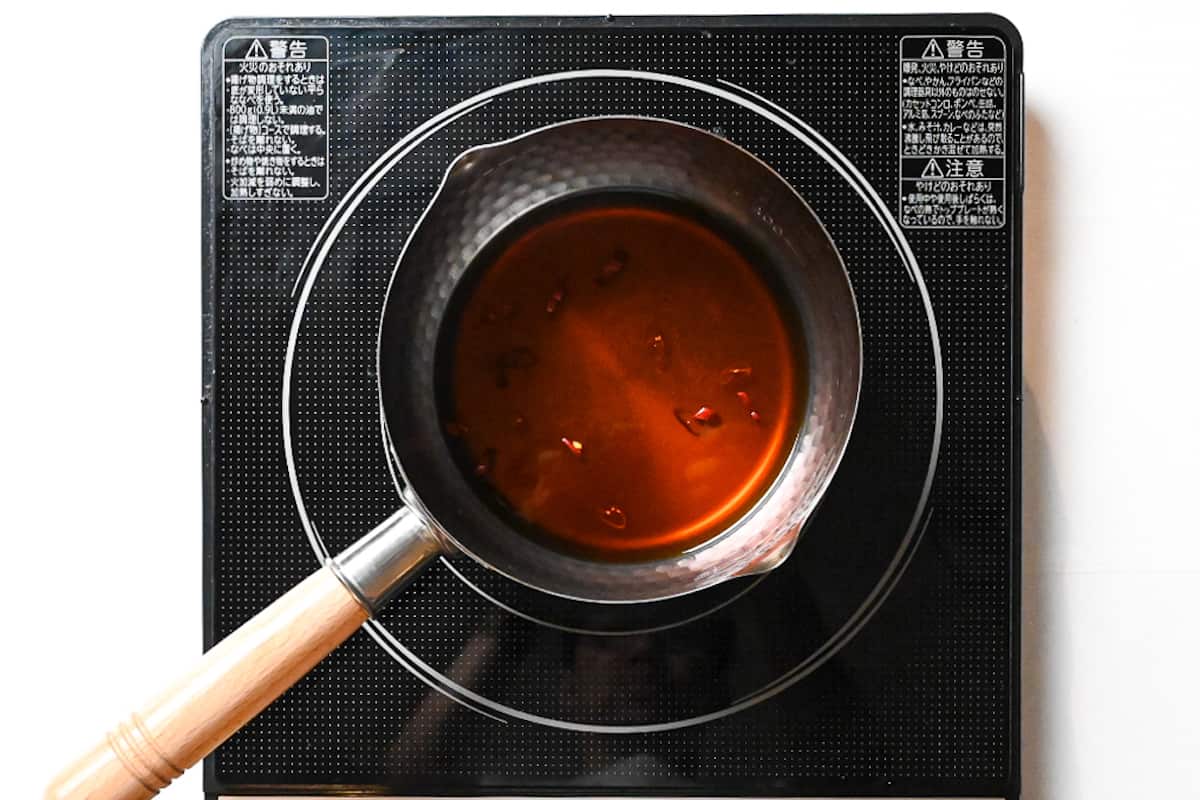
Bring it to a boil over medium heat and allow it to bubble for 1 minute to burn off the alcohol in the mirin, then take it off the heat and leave it to cool.
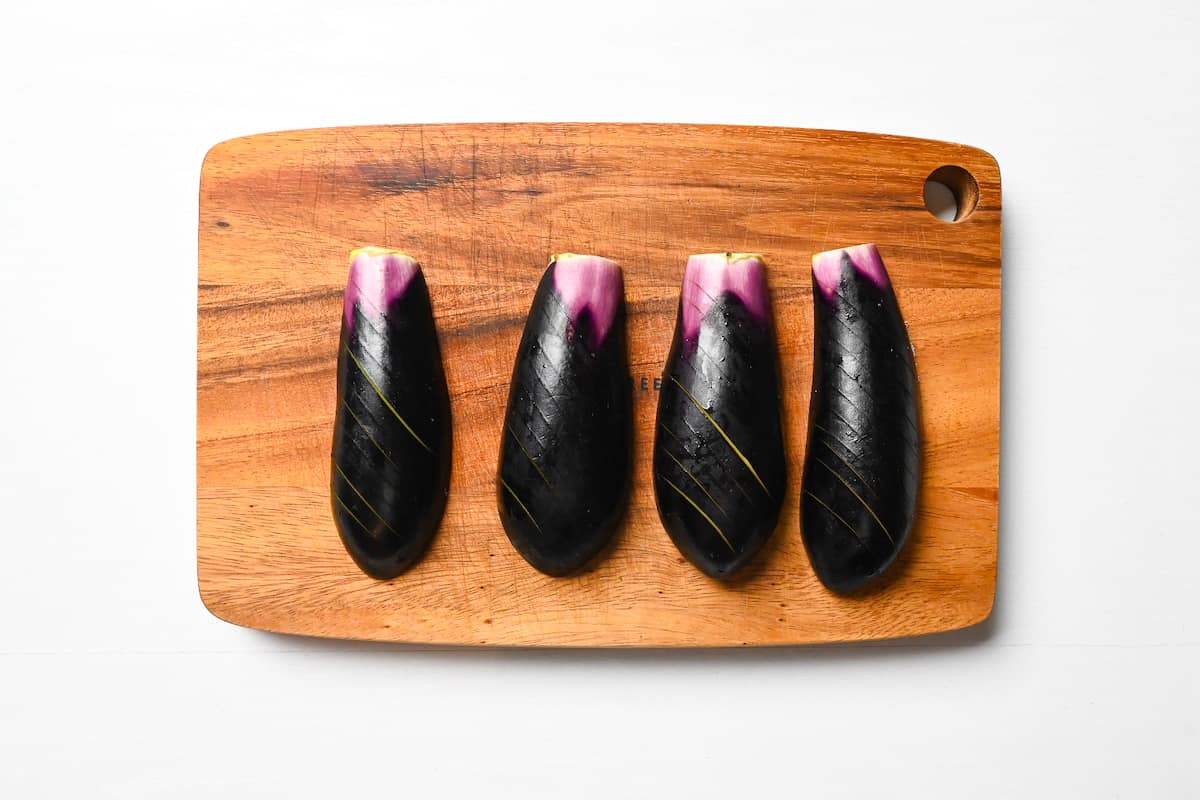
The first step is to cut off the top stem, cut in half lengthways, and then make shallow, diagonal cuts across the skin. We do this to absorb the dashi broth evenly on both sides.
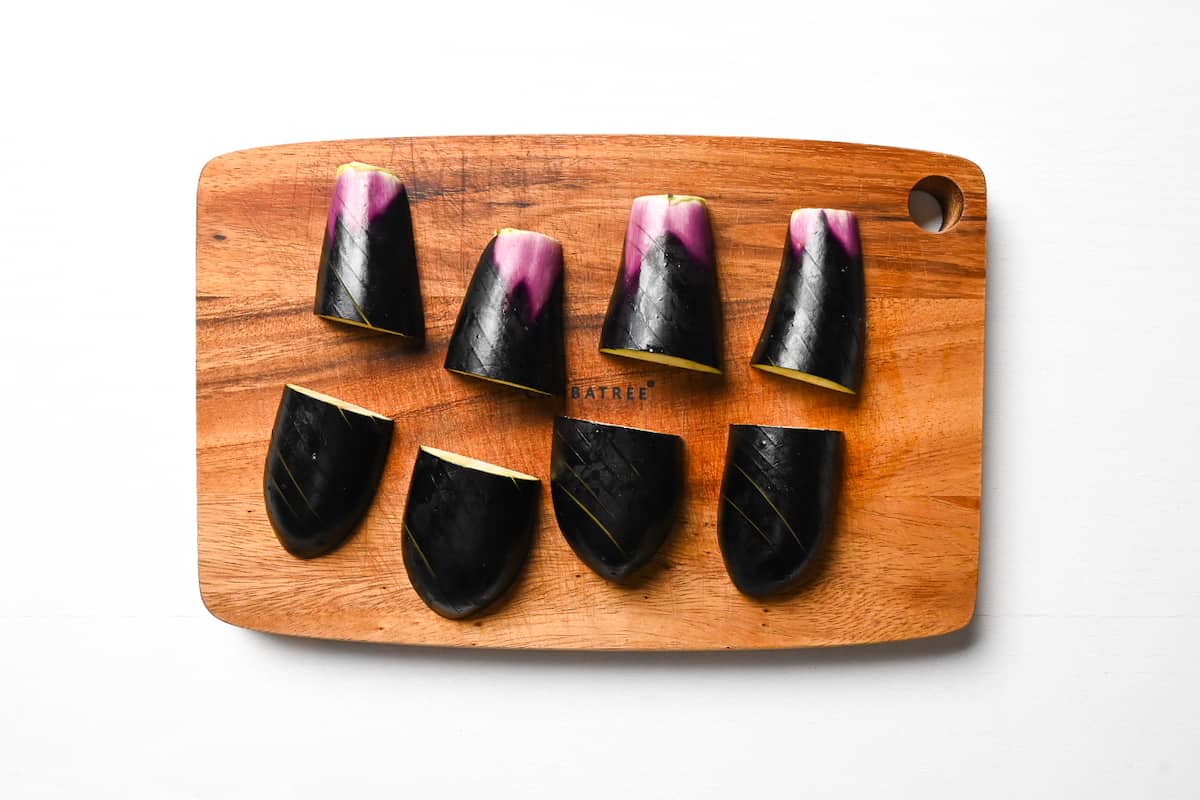
Depending on the size of the eggplant, you can cut it into halves (like above), thirds, or quarters. Essentially, each piece should be slightly bigger than Bitesize; it will shrink and soften when deep-fried.
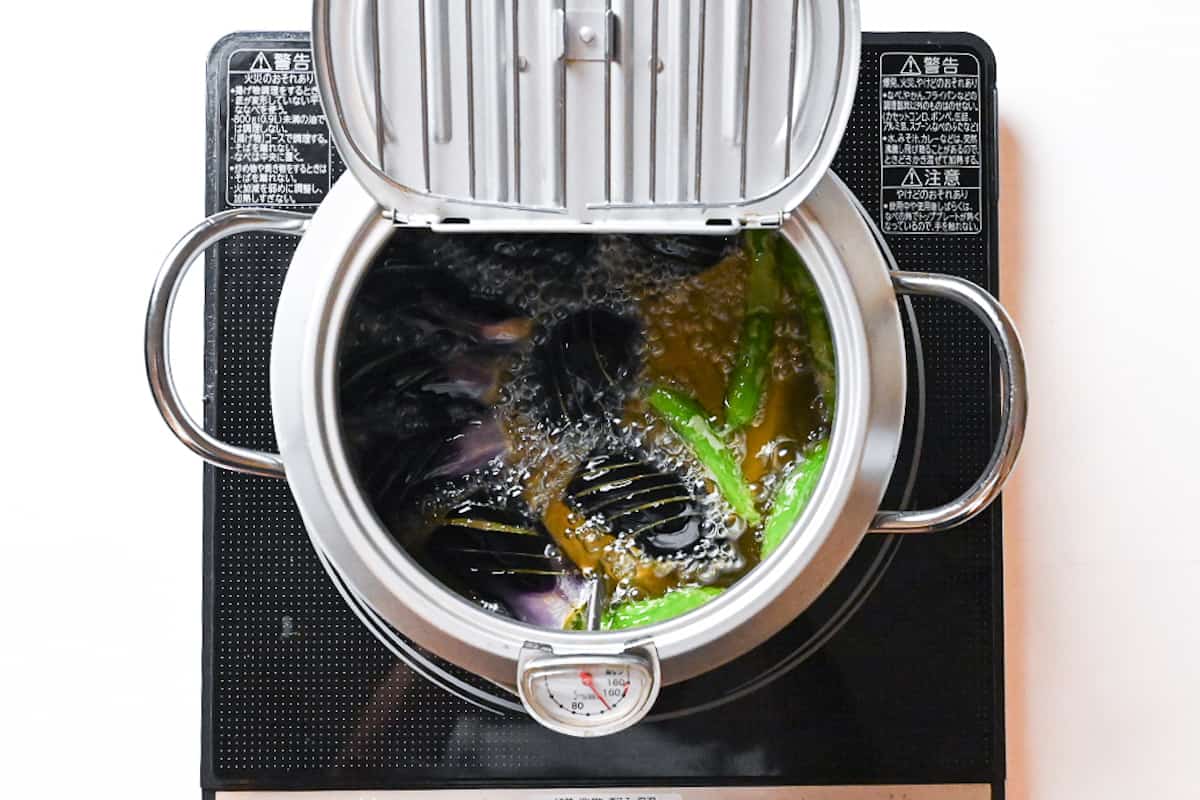
Heat the oil to 170°C (340°F) and then add the eggplant with the skin side facing down. Fry for 1 minute, then turn it over and continue to fry for another minute, 2 minutes in total.
Place the eggplant in the oil with the skin side down first, preventing the flesh from getting too oily.
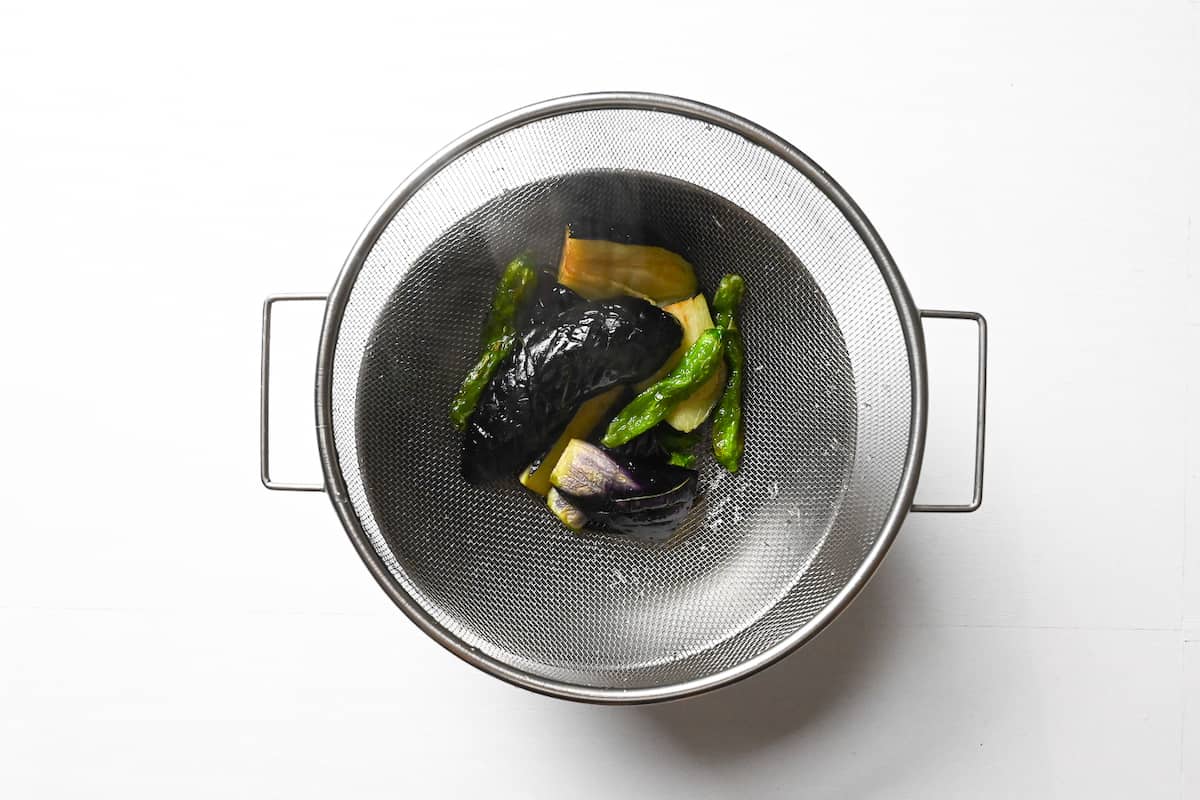
Once you’ve finished frying the vegetables, place them in a colander or sieve over a heatproof bowl and pour freshly boiled water over them. This will remove any excess oil without losing the flavor from the deep frying. It also prevents oil from leaking out into your dashi broth.
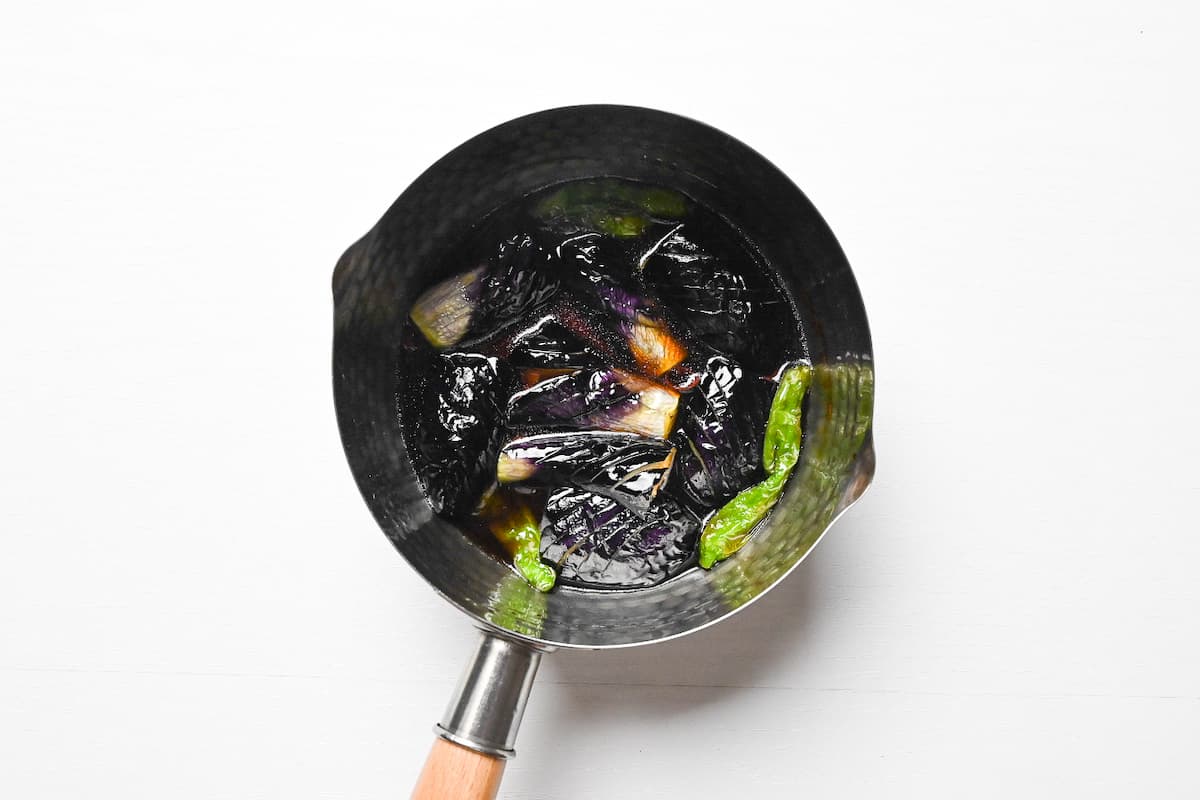
Place the deep-fried eggplant (and any other vegetables you might add) into the broth, making sure the ingredients are fully submerged. Chill in the fridge for 30 minutes before serving. (I placed a lid on the saucepan and stored it in the fridge, but you can transfer it to a sealable container if you prefer.)
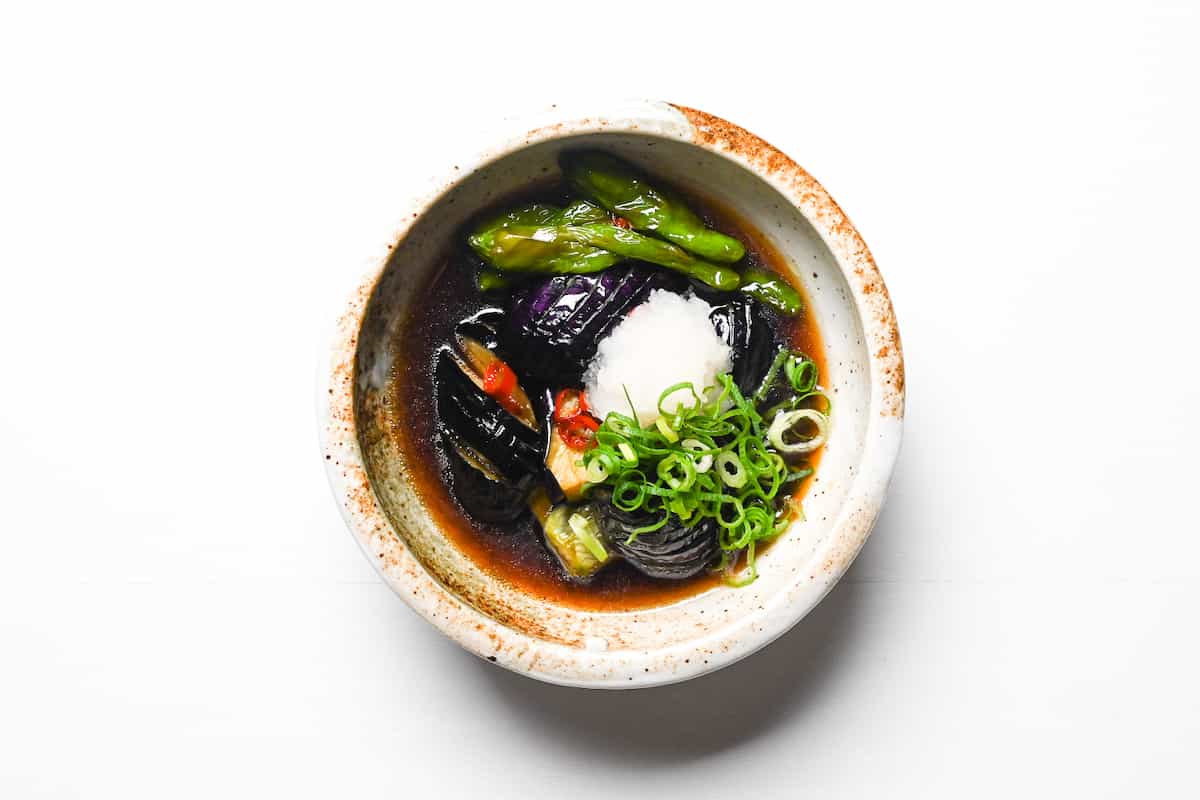
You can serve agebitashi in individual serving bowls or one large bowl to share. Garnish the dish with grated daikon radish and finely chopped spring onion. I also like to add sliced ooba (shiso/perilla leaves) and katsuobushi for more flavor, but they are optional!
Since agebitashi is served chilled, there’s no need to reheat.
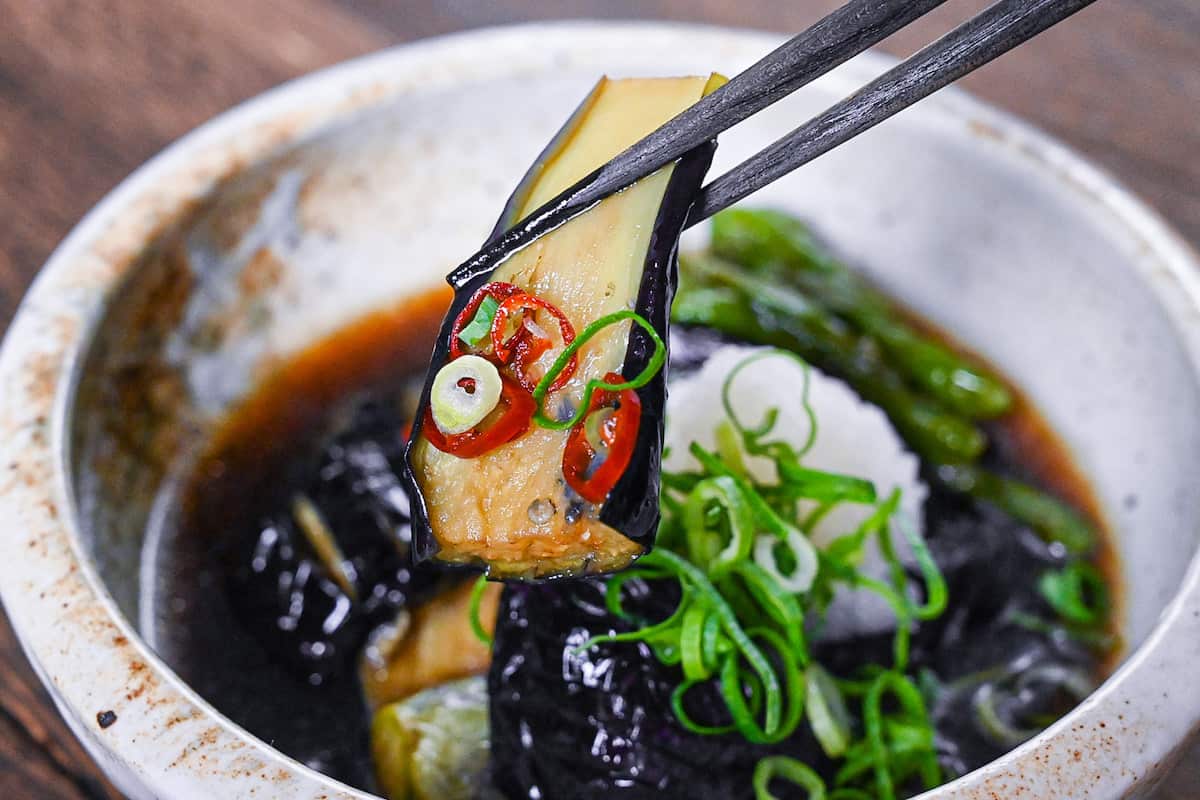
How to Store
This dish will keep for up to 3 days in the fridge, so feel free to make a larger batch. You can store it in a lidded container, the flavors will develop over time so it even tastes better the next day!
Agebitashi is one of my favorite ways to enjoy eggplant, I hope you like it too!
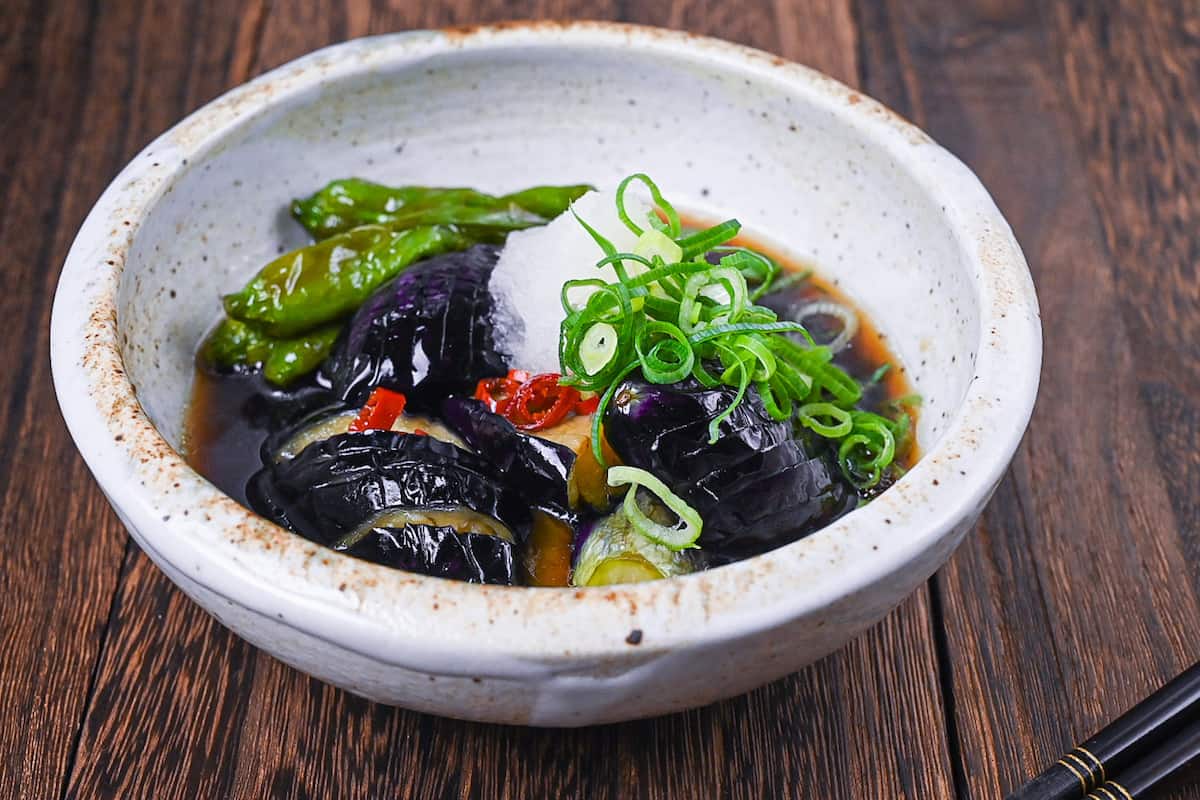
I hope you enjoy this Nasu no Agebitashi recipe! If you try it out, I’d really appreciate it if you could spare a moment to let me know what you thought by giving a review and star rating in the comments below. It’s also helpful to share any adjustments you made to the recipe with our other readers. Thank you!
More Japanese Side Dish Recipes
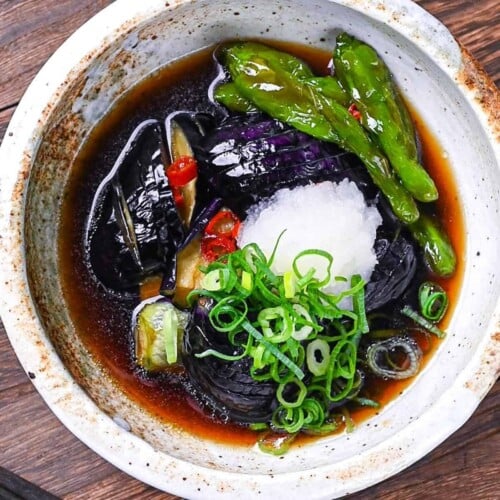
Nasu no Agebitashi (Fried Eggplant in Dashi Broth)
Equipment
- Japanese-style fryer
- Yukihira saucepan
Ingredients
- 100 ml dashi stock use shiitake and kombu dashi for plant-based diets
- 1 tbsp Japanese soy sauce (koikuchi shoyu)
- 1 tbsp mirin
- ¼ tsp sugar
- 1 dried red chili pepper deseeded and thinly sliced
- 2 eggplants medium size
- 6 shishito peppers optional
- cooking oil for deep frying
- 1 tbsp grated daikon radish (daikon oroshi)
- finely chopped green onions optional garnish
My recommended brands of ingredients and seasonings can be found in my Japanese pantry guide.
Can’t find certain Japanese ingredients? See my substitution guide here.
Instructions
- Add 100 ml dashi stock, 1 tbsp Japanese soy sauce (koikuchi shoyu), 1 tbsp mirin, ¼ tsp sugar, and 1 dried red chili pepper to a small saucepan. Place on the stove on medium heat and bring it to a boil. Allow it to boil for 1 minute, then remove it from the heat and leave to cool.

- Wash 2 eggplants and cut off the stems. Cut in half lengthways and make shallow, diagonal slices across the skin side. (Each incision should be about ½ cm apart.)

- If you have small eggplants, cut them in half horizontally. If you have longer eggplants, cut them into thirds or quarters.

- Heat your oil to 170 °C (338 °F) and add the eggplant with the skin side facing down, fry for 1 min on each side. Fry 6 shishito peppers for 1 minute.

- Remove the eggplant and shishito peppers from the oil and transfer to colander. Place the colander either in the sink or in a large heat proof bowl and pour boiling water over it to wash off the excess oil.

- Transfer the eggplant and shishito peppers to the agebitashi broth and leave to cool. Once cool, chill in the refrigerator for at least 30 minutes.

- Dish up and serve with 1 tbsp grated daikon radish (daikon oroshi) and finely chopped green onions.

- Enjoy!

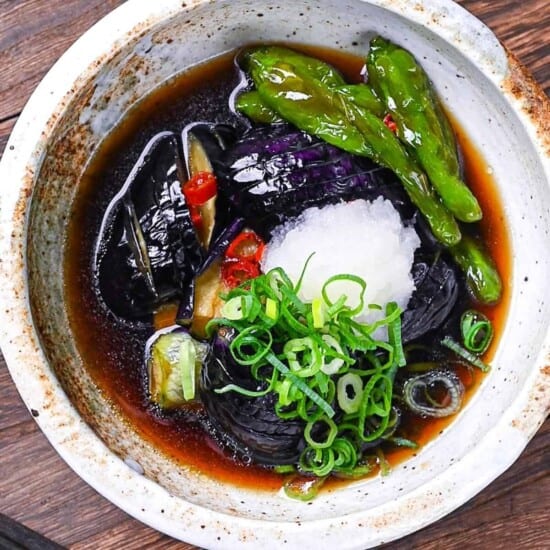


In our family we grate the daikon, squeeze water out of it, and mix it into the sauce for a minute before finishing cooking the sauce.
Hi Jan,
That sounds fantastic! Such a tasty mizore-style twist! Thank you for sharing your family’s method!
Yuto